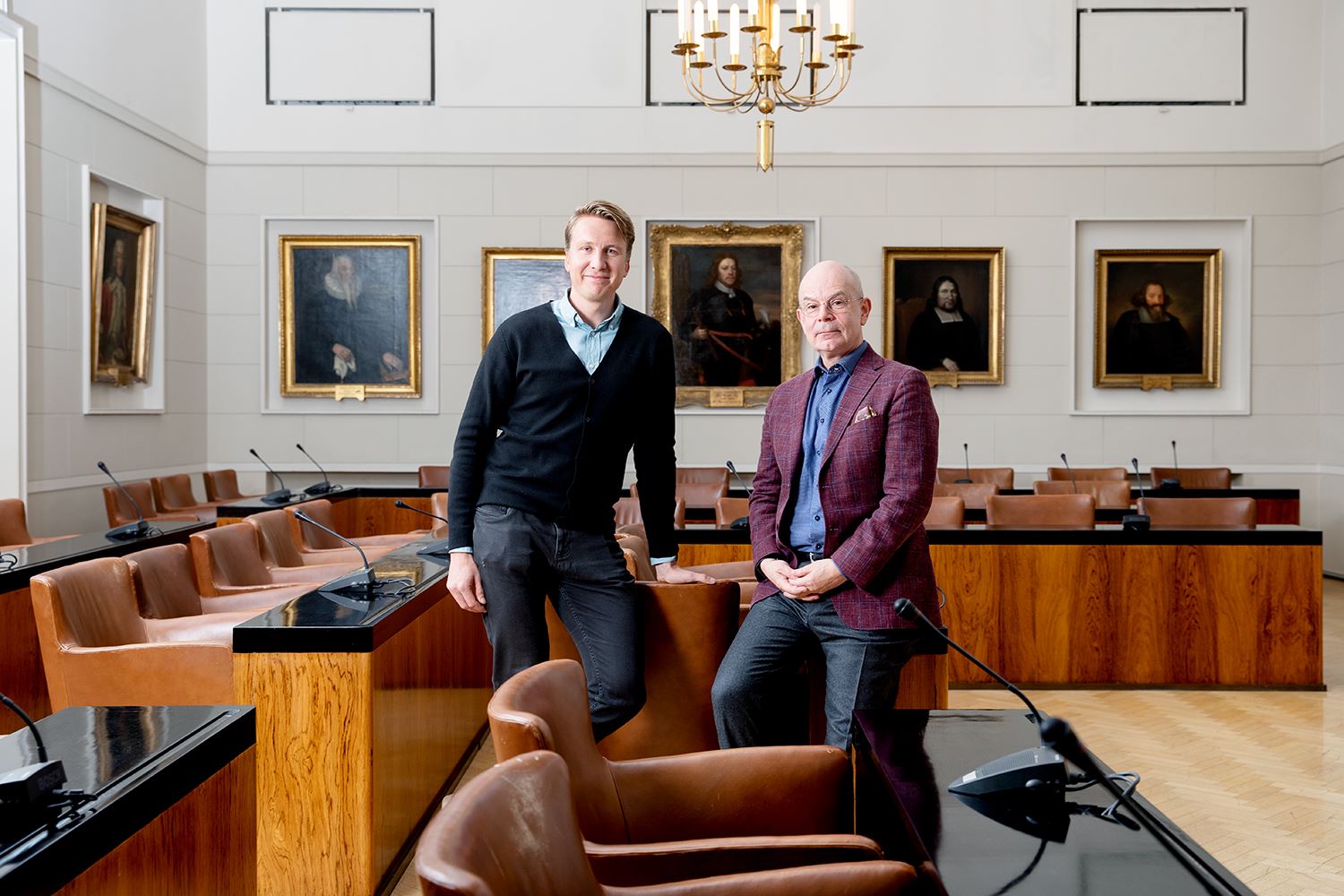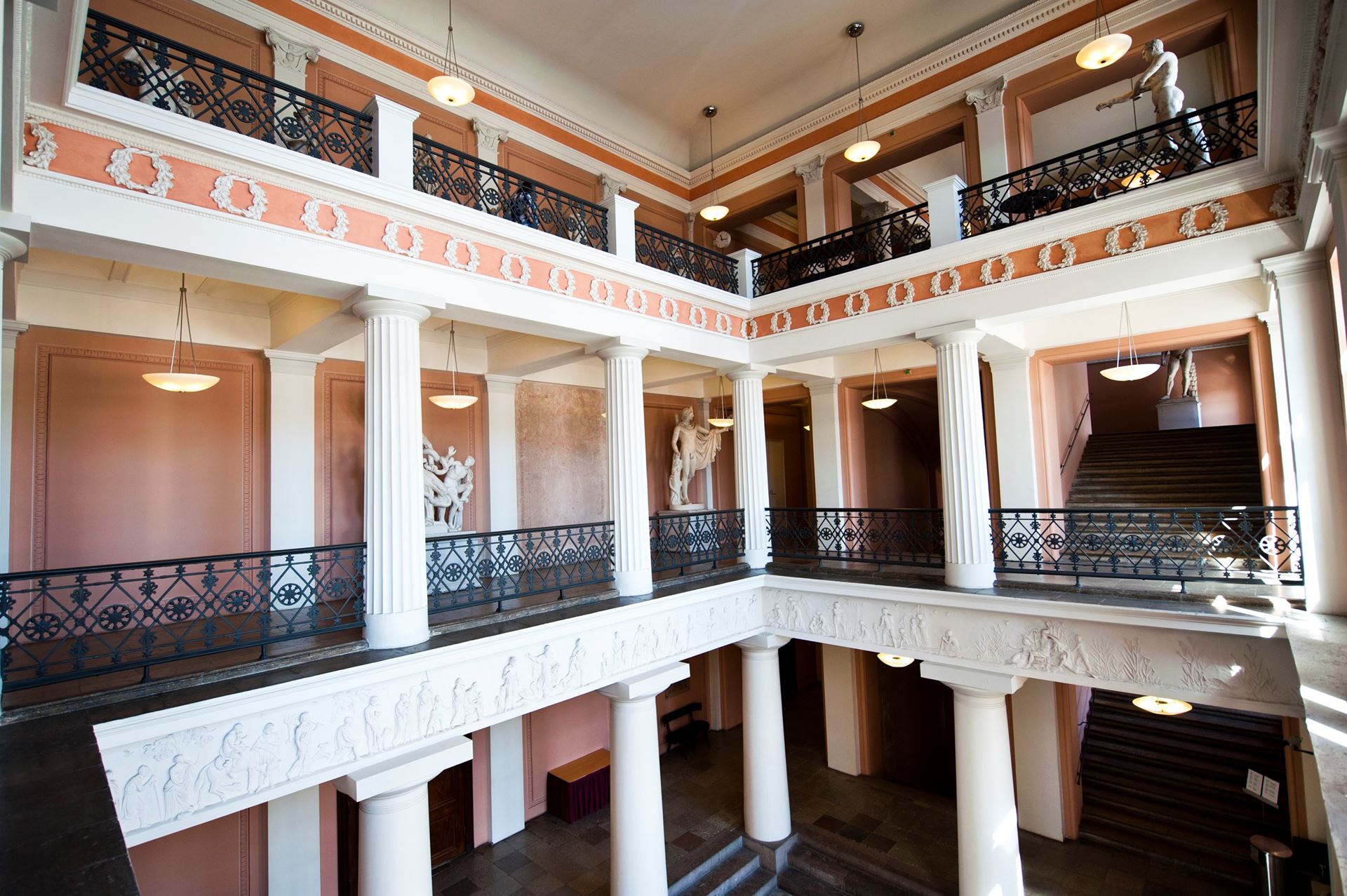Sustainable data centers as a service
- Work
- City
- Renovation
- 11/4/2019
The main building of the University of Helsinki – bringing science and people together
Senate Square is a significant part of Finnish history. Designed by the architect Carl Ludvig Engel, Senate Square is dominated by Helsinki Cathedral, the Government Palace, the National Library and the main building of the University of Helsinki. The last of these has stood there since 1832. The time has now come for a comprehensive renovation of the building.

At nearly 200 years of age, the main building of the University of Helsinki has seen it all. It has witnessed demonstrations, parades and victory celebrations through the centuries, not to mention heavy bombing in wartime. As part of the celebrated cohesive architecture surrounding Senate Square, the main building of the University of Helsinki has become a builder of Finnish identity, which is why its renovation is a one-of-a-kind project in its size category.
“We want to carry out the renovation work with the utmost respect for the unique history of the University of Helsinki and the essence of Finnishness. While the premises will be updated to match today’s needs, it is crucial that we recognise and cultivate the rich cultural heritage of the building,” says Tom Böhling, Vice-Rector of the University of Helsinki (on the right in photo).
The main principles and objectives of the EUR 40 million first phase of the project have been shaped by the alliance partners, which are the University of Helsinki Funds, YIT and Jeskanen-Repo-Teränne Architects, the firm responsible for architectural design in the project. The planning meetings have been attended by many different specialists. One of them is YIT Project Manager Toni Immonen, who is in charge of the project’s planning.
“We have worked in close collaboration with the University of Helsinki and the architectural firm right from the start. In the project planning stage, we have reconciled the design solutions with the project objectives and needs specified by the University of Helsinki. We have also clarified the objectives concerning issues such as scope, quality, implementation and costs.”
Alliance contracting supports agile decision-making
Compared to other project models, alliance contracting has a larger number of parties involved. According to Tom Böhling, getting together around the same table has made decision-making easier, and progress has been achieved with a good mutual understanding.
“The alliance model has enhanced decision-making related to the project. With the main contractor and the architectural firm both on hand to listen to our needs, we have been able to prioritise matters based on different perspectives. At the same time, all of the parties involved have developed the sense that we will achieve success in this project through working together.”
Toni Immonen finds that prioritisation is an essential aspect of planning. You need to determine what the viewpoints and wishes of the various parties are and assign priorities to them.
“When we have identified a particular aspect of the project as having special importance, we have decided together what resources will be allocated to it. Conversely, we have tried to identify opportunities for cost savings in areas where a more cost-efficient implementation can be used without any loss in functionality.”
From the University of Helsinki’s perspective, the project planning stage has also involved strategic thinking. Representatives of the University staff have shared their practical experiences of the strengths and weaknesses of the existing main building.
“Our employees have played an important role in communicating the experiences of the building’s users. They see the daily flow of people in the building, where people spend time and what they are interested in. We have taken their comments on board, as our aim is for the main building to continue to serve as a meeting place that is open to everyone. That is part of our strategy,” Böhling explains.
Experience helps in planning work on historic buildings
The renovation of historic buildings always includes risk assessments pertaining to old structures. According to Immonen, careful preparation makes the subsequent stages easier.
“One key aspect of the project planning phase is to prepare a condition survey programme and conduct risk assessments. The surveys and assessments guide the planning activities and help specify the cost estimates. The risk assessments and the results obtained from the condition survey programme help us understand the environment we will operate in and what aspects require special attention – and how much that will cost.”
The project planning phase has also included cooperation with the National Board of Antiquities. In the case of this historic building, which was completed in 1832 and partially renovated after the war, the new solutions employed in the upcoming renovation project are not allowed to alter the building’s architecture. This is a point that is emphasised by Vice-Rector Tom Böhling.
“Preserving the building’s historical and architectural value is an integral part of this project, and the National Board of Antiquities has played an important role in this regard.”
YIT and the University both have extensive experience of renovating buildings with a rich cultural heritage, so working together with the National Board of Antiquities is something they are quite used to. Projects such as the Parliament House, Stora Enso head office, the former military hospital Tilkka and the Serpentine House have provided valuable lessons, and the National Board of Antiquities has been invited to be increasingly involved in day-to-day planning and design activities.
“We keep in touch and hold regular meetings. With representatives from the National Board of Antiquities involved in project planning right from the start, they know what direction we are taking and what will happen next,” Immonen explains.
Taking the University into the future
The project plan for the main building of the University of Helsinki was approved in late 2018, and the general planning phase began soon after the turn of the year. When the University of Helsinki completed its strategic specifications and their wishes for the building became known, decisions could be made about how the premises would be used. At the same time, the details of the alterations outside the main building were specified further. Communicating and illustrating these aspects to the project’s participants and stakeholders was made easier by the extensive use of building information modelling during project planning.
“From the perspective of technical building systems, information on the final uses and the necessary alterations is essential. We also have to consider that the work carried out on the building’s facade and roof will partly alter the cityscape, so we need to recognise the architectural and cultural significance of the site. In this project, we will also pilot the use of the RTS environmental standard for a protected building. This means that energy efficiency and life-cycle thinking will be given special consideration in our planning and design decisions.
While the changing uses of the premises will give new shape to the functionality of the main building of the University of Helsinki, Böhling underlines the holistic nature of the project. He sees the future of the main building of the University of Helsinki as a versatile complex that serves the scientific community, local residents and other visitors.
“What we need to bear in mind during this project is that we are not renovating the building or creating teaching premises for a period of only a few years. The project is based on a strong vision about future needs. This large investment will help ensure that the University of Helsinki continues to be a versatile community that serves a wide range of audiences and carries a rich cultural heritage.”
Photos of the building: University of Helsinki/Linda Tammisto and Veikko Somerpuro








